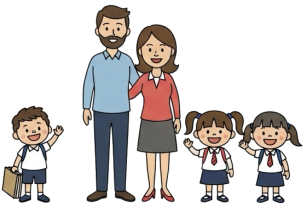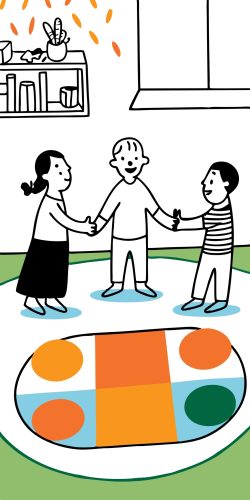
Question More, Action Knowledge.
Remember, at QMAK, we don’t just teach; we empower. We don’t just inform; we inspire. We don’t just question; we act. Become a Gold Member, and let’s unlock your child’s full potential, one question at a time.

Positive social connections serve as a powerful antidote to self-pity.
When children develop meaningful relationships with peers, they gain different perspectives on challenges, receive emotional support outside the family, and experience the joy of belonging to a community.
These connections also provide natural opportunities to develop social skills, build confidence, and focus on others rather than dwelling on personal difficulties.
These activities are designed to help 7-year-olds build and strengthen social connections in supportive, structured ways.
Through these experiences, children learn that they are valued members of various social groups and develop the skills to initiate and maintain healthy relationships.
Purpose: To create concrete symbols of friendship while practicing cooperation, generosity, and the social skills that strengthen relationships.

Set the stage for positive social interaction:
Guide children toward positive social exchanges:
Weave meaningful conversation into the activity:
Create a special moment for giving and receiving:
Use the experience as a foundation for ongoing friendship:

Purpose: To develop cooperation, communication, and group problem-solving skills through engaging activities that require working together toward common goals.

Choose games that match children’s developmental and social needs:
Create a structure that encourages positive interaction:
Guide the process without controlling it:
Help children process the experience and extract insights:
Use the experience as a foundation for ongoing cooperation:

Purpose: To develop listening skills, empathy, and deeper connections through the exchange of personal stories and experiences in a supportive group setting.

Establish conditions that encourage openness and respect:
Structure the sharing process for success:
Teach and reinforce attentive, empathetic listening:
Help children find meaningful connections with each other:
Build on the connections formed through story sharing:

Purpose: To build social bonds through shared experiences in nature, combining physical activity, exploration, and cooperative challenges.

Design outdoor experiences that promote connection and cooperation:
Set expectations and excitement for the social experience:
Guide interactions that deepen relationships:
Help children process the shared experience:
Use the shared experience to strengthen ongoing relationships:

Purpose: To build confidence, communication skills, and mutual appreciation by creating opportunities for children to share their knowledge and skills with each other.

Discover meaningful skills that children can share:
Support children in organizing their knowledge:
Set up physical and emotional conditions for learning:
Support both teachers and learners during the session:
Help children process the value of knowledge sharing:

These social connection activities help children develop:

Remember that social skills develop gradually, and children vary widely in their natural sociability.
Some may need more support and scaffolding than others.
The goal is progress rather than perfection, celebrating each small step toward more connected relationships.

The goal is to help your child build a network of positive relationships that provide enjoyment, support, and diverse perspectives—a natural counterbalance to self-focused thinking and self-pity.

Remember, at QMAK, we don’t just teach; we empower. We don’t just inform; we inspire. We don’t just question; we act. Become a Gold Member, and let’s unlock your child’s full potential, one question at a time.